Physical Address
304 North Cardinal St.
Dorchester Center, MA 02124
Physical Address
304 North Cardinal St.
Dorchester Center, MA 02124

Best Food Tours in Rome | Culinary Travel Experiences, Cooking Classes, Wine Tours, and Local Cuisine
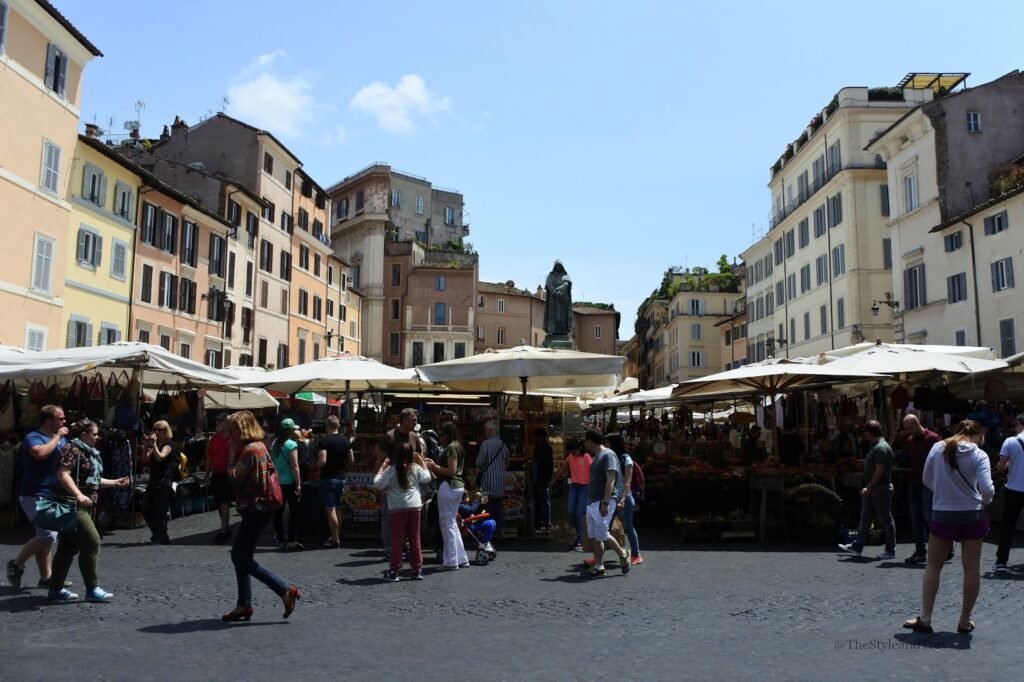
Best Food Tours in Rome
Meta Description: Discover Rome’s best food tours, cooking classes, and wine experiences. From budget-friendly options to premium culinary adventures, explore authentic Italian cuisine with local guides and hidden gems.Also discover family travel planning, Cheap flights and budget-friendly hotels.
Have you ever wondered what makes Rome’s food scene so irresistibly magnetic? Walking through the cobblestone streets of the Eternal City, I’m constantly reminded that this isn’t just a destination where history lives in ancient stones – it’s where culinary traditions have been perfected over millennia.
Discover hidden treasures in every corner of Rome, where the aroma of fresh pasta mingles with centuries-old recipes passed down through generations. The city offers an extraordinary blend of undiscovered gems and iconic culinary landmarks that make every food lover’s heart skip a beat.
When I first stepped into a tiny trattoria tucked away in Trastevere, watching the nonna hand-roll each piece of gnocchi while her grandson served wine from unmarked bottles, I realized that Rome’s true magic lies not just in its monuments, but in its locally favored places where authentic flavors tell stories of the past.
Rome’s culinary landscape represents more than just sustenance – it’s a living museum where every dish carries the DNA of ancient Roman civilization mixed with influences from across the Italian peninsula. Whether you’re seeking cheap flights and budget-friendly hotels, or planning a luxurious gastronomic adventure, Rome welcomes every type of food enthusiast with open arms and full plates.
The city’s food tours have evolved into sophisticated cultural experiences that go far beyond simple tastings. These journeys transform tourists into temporary locals, unveiling the secrets behind Rome’s most beloved dishes while exploring neighborhoods that many visitors never discover.
Food tours in Rome serve as edible time machines, transporting participants through layers of history with each carefully curated bite. Unlike generic sightseeing, culinary tours offer intimate encounters with local traditions that have survived empires, wars, and modernization.
Uncover undiscovered paradises hidden within Rome’s bustling markets, where vendors have been selling the same family recipes for generations. These experiences provide context that transforms a simple carbonara from mere pasta into a dish with deep cultural significance.
Professional food guides in Rome possess encyclopedic knowledge about local suppliers, seasonal ingredients, and the intricate relationships between neighborhoods and their signature dishes. They navigate the complex web of authentic establishments versus tourist traps, ensuring visitors experience genuine Roman cuisine.
The social aspect of food tours creates connections that extend beyond the duration of the experience. Fellow participants often become dining companions for subsequent meals, while local guides frequently become trusted advisors for the remainder of your stay.
For families planning family vacation ideas, food tours offer educational opportunities where children learn about different cultures through taste and observation. Many tour operators provide specialized activities designed to engage younger participants while maintaining the educational value that adults appreciate.
Trastevere stands as Rome’s most romantic food neighborhood, where narrow medieval streets harbor some of the city’s most authentic dining establishments. This area represents a perfect blend of traditional Roman cuisine and innovative culinary expressions.
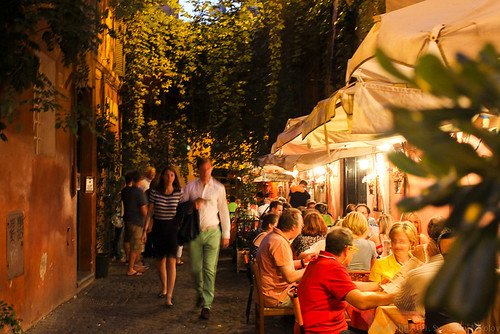
Trastevere: The Bohemian Food Haven
The neighborhood’s cobblestone pathways lead food enthusiasts through a maze of family-run trattorias, wine bars, and gelaterias that have maintained their original character despite increasing tourist attention. Explore undiscovered beauty in small osterie where locals gather for evening aperitivos and animated discussions about football and politics.
Transportation to Trastevere involves crossing the Tiber River via historic bridges, each offering picturesque views that enhance the culinary adventure. The area remains accessible via bus lines 23 and 8, while the nearby Trastevere train station provides connections to other parts of Rome.
Budget-conscious travelers can find excellent value in Trastevere’s numerous pizzerias serving authentic Roman-style thin-crust pizza at prices ranging from €8-15 per pie. For those seeking premium experiences, high-end restaurants offer innovative interpretations of classic dishes with prices typically ranging from €45-80 per person.
Testaccio emerges as Rome’s most genuine food neighborhood, historically known as the city’s slaughterhouse district and now recognized as the epicenter of traditional Roman cuisine. This working-class area maintains its authentic character while offering some of Rome’s most renowned culinary experiences.
The neighborhood’s covered market, Mercato di Testaccio, serves as the beating heart of local food culture. Vendors offer seasonal produce, artisanal cheeses, fresh seafood, and prepared foods that reflect the true taste of Roman cuisine. Find your secret place among the market stalls where locals shop for their daily meals.
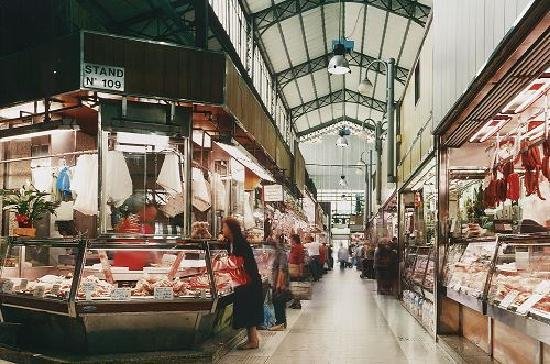
Mercato di Testaccio
Testaccio’s restaurants specialize in quinto quarto cuisine – dishes featuring organ meats and less conventional cuts that showcase the creativity and resourcefulness of Roman cooking. These establishments provide authentic experiences for adventurous eaters while offering more familiar options for conservative palates.
Transportation to Testaccio involves metro line B to Piramide station, followed by a pleasant 10-minute walk through residential streets. Alternatively, buses 23, 75, and 280 provide direct connections from various parts of the city.
For budget travelers, Testaccio offers exceptional value with traditional trattorias serving complete meals for €20-30 per person, including wine. The area’s proximity to central Rome makes it an ideal base for food enthusiasts seeking authentic experiences without tourist pricing.
Campo de’ Fiori combines daytime market activities with vibrant nightlife, creating a unique culinary atmosphere that evolves throughout the day. The morning market transforms the square into a colorful display of fresh produce, while evening brings wine bars and restaurants filled with both locals and visitors.

Campo de’ Fiori: Market Magic
The market vendors offer exceptional quality ingredients sourced from the Roman countryside, including seasonal vegetables, fresh herbs, and artisanal products. Discover the area’s charm by exploring relationships between vendors and local chefs who shop for their daily ingredients.
Surrounding streets contain a mix of traditional establishments and modern interpretations of Roman cuisine. The area provides easy access to some of Rome’s most historic sites while maintaining its role as a functioning neighborhood market.
Transportation to Campo de’ Fiori involves bus routes 40, 46, 62, and 64, with stops within walking distance of the square. The area’s central location makes it accessible from most Roman hotels and provides convenient connections to other culinary neighborhoods.
Budget options in Campo de’ Fiori include street food vendors offering supplì and pizza al taglio for €2-5 per item. Mid-range restaurants provide complete dining experiences for €25-40 per person, while upscale establishments charge €50-100 per person for premium ingredients and preparation.
Rome’s affordable food tour options provide exceptional value without compromising quality or authenticity. These experiences typically last 3-4 hours and include 6-8 food tastings plus wine or beverage pairings.
Group tours with larger numbers of participants offer the most economical option while maintaining professional guidance and curated food selections. Many operators provide tours in multiple languages, ensuring accessibility for international visitors seeking authentic experiences at reasonable prices.
Walking tours combine sightseeing with food sampling, allowing participants to explore multiple neighborhoods while learning about Roman history and culture. These experiences often include visits to local markets, tastings at family-run establishments, and opportunities to interact with vendors and chefs.
For travelers seeking cheap flights and budget-friendly hotels, food tours represent excellent value proposition as they combine entertainment, education, and substantial food sampling that can substitute for a complete meal.
Self-guided food tour options allow maximum flexibility while maintaining budget consciousness. Various apps and printed guides provide curated routes through different neighborhoods, complete with recommended stops and background information about each establishment.
Mid-range food tours offer enhanced experiences with smaller group sizes, premium food selections, and more intimate access to local establishments. These tours typically last 4-5 hours and include 8-12 tastings plus wine pairings.
Small group tours with maximum 12-15 participants provide more personalized attention from guides while maintaining reasonable pricing. These experiences often include behind-the-scenes access to kitchens, meetings with chefs, and detailed explanations of cooking techniques.
Evening tours combine food sampling with Rome’s romantic nighttime atmosphere, visiting illuminated monuments between culinary stops. These experiences create memorable combinations of sightseeing and dining that appeal to couples and food enthusiasts.
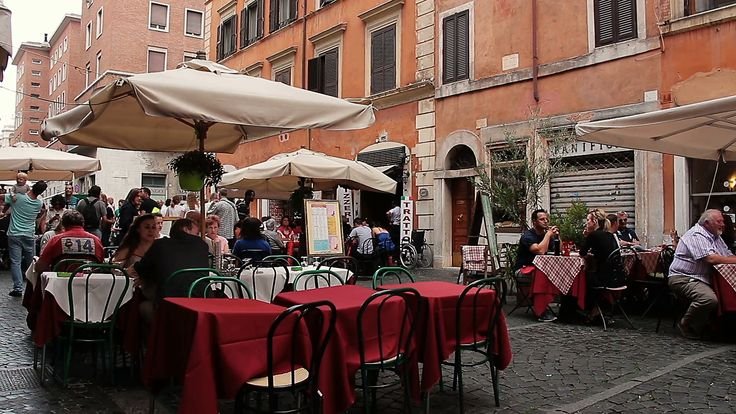
Evening Tours and Food Tasting in Rome
Specialized tours focusing on specific themes such as cheese and wine pairings, traditional Roman dishes, or seasonal ingredients provide deeper knowledge for participants with particular interests. These experiences often include educational components about ingredient sourcing and preparation methods.
Combination tours linking food experiences with other activities such as market visits, cooking demonstrations, or wine cellars provide comprehensive cultural immersion. These offerings appeal to visitors seeking multi-faceted experiences during limited time in Rome.
Luxury food tours offer exclusive access to Rome’s finest culinary establishments, private experiences with renowned chefs, and premium ingredients sourced from specific regions throughout Italy. These experiences typically last 5-7 hours and include multiple venues.
Private tours provide completely customized experiences tailored to individual preferences, dietary restrictions, and interests. Professional guides with culinary backgrounds offer expert commentary about ingredients, preparation methods, and cultural significance of each dish.
Restaurant hopping tours visit multiple high-end establishments for specific courses, creating progressive dining experiences that showcase different aspects of Roman cuisine. These tours often include wine pairings selected by sommeliers and meetings with executive chefs.
VIP access experiences include private cooking classes with professional chefs, exclusive wine cellar tours, and visits to specialty food producers outside Rome. These adventures often include transportation in luxury vehicles and personalized service throughout the day.
Multi-day culinary packages combine accommodation, meals, and educational experiences into comprehensive programs. These offerings appeal to serious food enthusiasts seeking deep immersion in Roman culinary culture.
Rome’s pasta making classes offer hands-on experiences where participants learn traditional techniques passed down through generations. These sessions typically begin with market visits to select fresh ingredients, followed by detailed instruction in proper pasta preparation methods.
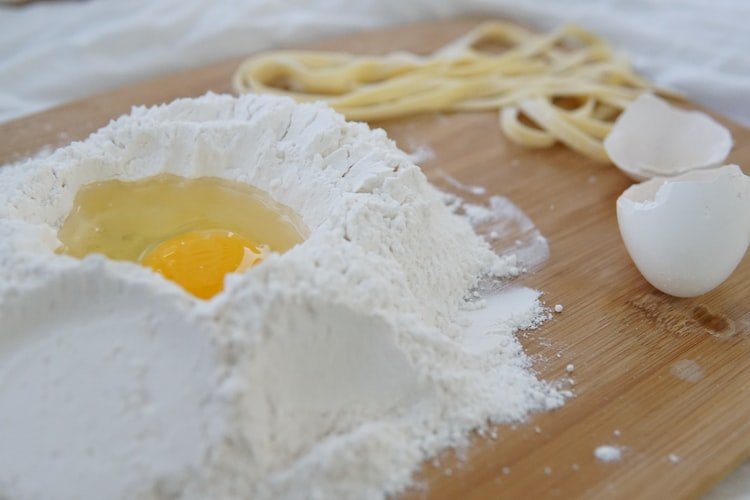
Traditional Pasta Making Classes
Professional instructors demonstrate various pasta shapes specific to Roman cuisine, including tonnarelli, pici, and fresh ravioli. Participants learn about the importance of ingredient quality, proper kneading techniques, and timing considerations that affect final results.Here
Classes usually conclude with communal meals where participants enjoy their creations paired with appropriate sauces and wine selections. These experiences create social atmospheres where travelers connect with fellow food enthusiasts while learning practical skills they can recreate at home.
Many cooking schools offer specialized classes focusing on specific pasta types or sauces traditional to Roman cuisine. These detailed sessions provide deep knowledge about particular dishes while maintaining hands-on learning approaches.
Budget considerations for pasta making classes range from €65-150 per person, depending on duration, group size, and included elements such as wine pairings or market visits.
Rome’s wine experiences showcase selections from throughout Italy, with particular emphasis on Lazio region productions and their relationships with Roman cuisine. These tastings provide education about Italian wine regions, grape varieties, and proper pairing principles.
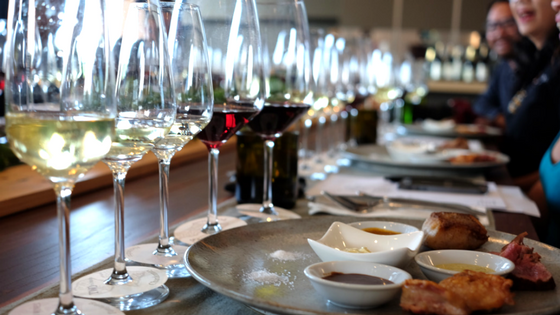
Wine Tasting and Pairing Experiences
Professional sommeliers guide participants through curated selections representing different styles, regions, and price points. Sessions include education about tasting techniques, vocabulary for describing wines, and understanding of factors affecting wine quality.
Food pairings demonstrate relationships between specific wines and traditional Roman dishes, illustrating how proper combinations enhance both elements. These experiences often include visits to historic wine cellars or enotecas with centuries of history.
Educational components cover Italian wine classification systems, reading wine labels, and understanding regional characteristics that influence flavor profiles. This knowledge helps participants make informed selections during their remaining time in Rome and future travels.
Pricing for wine experiences varies from €45-120 per person, depending on wine quality, number of tastings, food pairings, and venue exclusivity.
Multi-day cooking workshops provide intensive learning experiences covering various aspects of Roman and Italian cuisine. These programs typically include multiple cooking sessions, market visits, restaurant meals, and educational components about food culture.
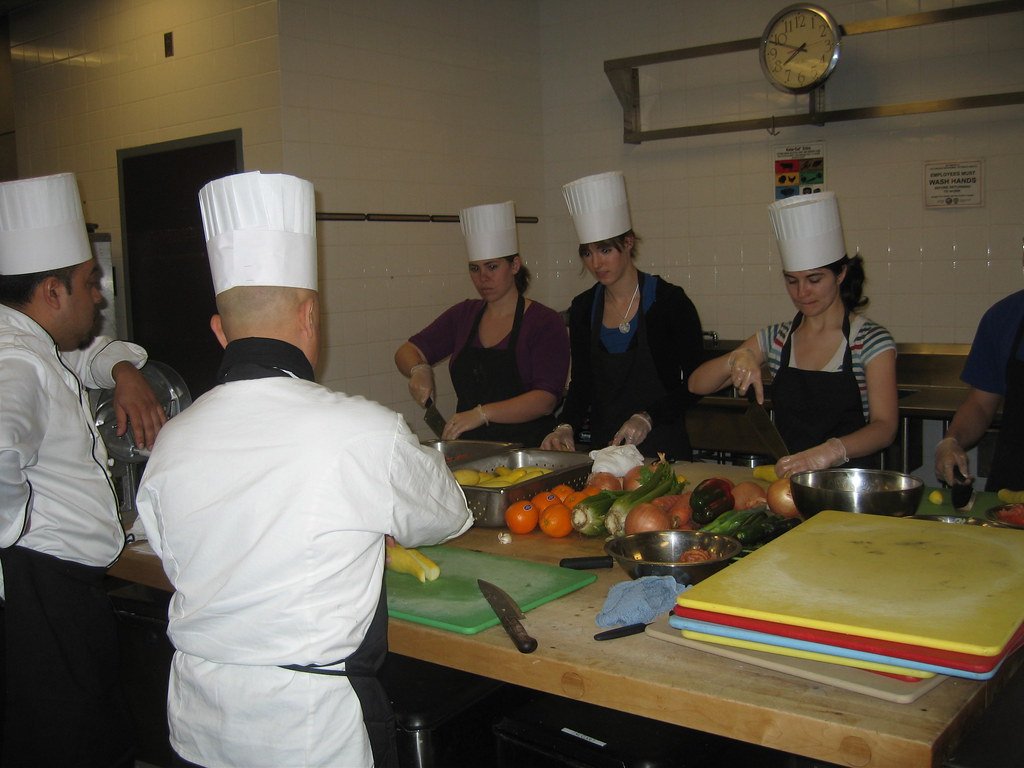
Comprehensive Culinary Workshops
Professional chefs with backgrounds in traditional Roman cuisine lead these workshops, providing expert instruction in techniques, ingredient selection, and presentation methods. Participants learn complete meal preparation from appetizers through desserts.
Cultural components include visits to food producers, specialty shops, and historic markets where participants learn about ingredient sourcing and quality assessment. These experiences provide comprehensive understanding of the entire food system from production to consumption.
Hands-on learning covers bread making, fresh pasta preparation, sauce creation, meat and fish cookery, and dessert production. Participants develop practical skills applicable to recreating Roman cuisine in their home kitchens.
Comprehensive workshops range from €180-400 per person per day, depending on duration, instructor credentials, included meals, and additional activities such as transportation or accommodation packages.
Rome’s public transportation system provides efficient access to all major food neighborhoods while maintaining budget-friendly pricing. The integrated system includes metro lines, buses, and trams that connect culinary districts throughout the city.
Single journey tickets cost €1.50 and remain valid for 100 minutes, allowing transfers between different transportation modes. This pricing structure makes it economical to visit multiple food areas during single outings.
Daily transportation passes cost €7 and provide unlimited access to all public transportation, making them ideal for food enthusiasts planning to visit multiple neighborhoods. Weekly passes offer additional savings for extended stays focused on culinary exploration.
Metro lines A and B provide primary connections between central Rome and major food districts. Line A serves popular areas including Spagna and Ottaviano (near Vatican), while Line B connects Colosseum area with Testaccio and EUR districts.
Bus routes offer more detailed access to specific food areas, with routes 23, 40, 64, and 75 serving multiple culinary neighborhoods. Night buses continue service after metro closure, accommodating food tours and dining experiences that extend into evening hours.
For convenient airport transfers to begin your culinary journey, visitors can easily arrange transportation through our reliable Book A Transfer service, ensuring smooth arrival to your chosen accommodation.
Rome’s compact historic center allows easy walking between major food areas, providing opportunities to discover additional culinary gems during transit. Many food tours incorporate walking routes that connect multiple neighborhoods while showcasing historic sites.
The distance between Trastevere and Campo de’ Fiori involves a pleasant 15-minute walk across historic bridges with scenic river views. This route passes numerous additional food establishments and provides photo opportunities at iconic Roman locations.
Testaccio to Trastevere requires approximately 25 minutes walking through diverse neighborhoods, allowing observation of local life and discovery of undiscovered gems that many tourists miss. This route includes passages through residential areas where locals shop and dine.
Walking routes between food districts often include stops at historic markets, small specialty shops, and casual eating establishments that provide authentic local experiences. These discoveries enhance overall culinary understanding while providing budget-friendly food options.
Comfortable walking shoes are essential for food tours involving multiple districts, as Roman streets include uneven surfaces and significant walking distances. Weather considerations affect route planning, particularly during summer heat or winter rain.
Taxi services provide convenient transportation for food enthusiasts with limited mobility or those visiting restaurants outside central areas. Fixed rates apply for airport transfers (€48 from Fiumicino), while city travel uses metered pricing starting at €3.
Ride-sharing services offer competitive pricing and convenient booking through smartphone apps. These services particularly benefit groups visiting multiple restaurants during evening dining experiences or travelers returning to hotels after late dinners.
Bicycle rentals provide eco-friendly transportation that allows detailed exploration of food neighborhoods while maintaining flexibility for spontaneous discoveries. Many rental companies offer guided cycling food tours that combine transportation with culinary experiences.
Scooter rentals appeal to experienced riders seeking efficient transportation between distant food areas. However, Roman traffic requires significant skill and comfort with urban riding conditions.
Private transfer services offer luxury transportation with professional drivers knowledgeable about Rome’s food scene. These services provide door-to-door convenience for premium dining experiences or group transportation to specific restaurants.
Explore undiscovered beauty in Rome’s neighborhood markets where locals shop for daily ingredients and prepared foods. These venues offer exceptional quality at prices significantly lower than tourist-oriented restaurants.
Lunch menus (menu del giorno) provide substantial savings at restaurants throughout Rome, typically offering three courses with wine for €15-25 per person. These meals showcase the same quality ingredients and preparation methods as evening service at reduced prices.
Standing consumption at bars and cafes costs significantly less than table service, particularly for coffee, cornetti, and light meals. This local custom provides authentic experiences while maintaining budget consciousness.
Happy hour offerings at wine bars include substantial appetizer spreads with beverage purchases, often providing enough food for light dinners. These experiences typically occur between 6-8 PM and offer excellent value for wine enthusiasts.
Shopping at local markets and preparing simple meals using high-quality Roman ingredients provides budget-friendly options while learning about local food culture. Many accommodations include kitchen facilities that enable this approach.
Seasonal menu focus provides the best value and quality, as restaurants feature ingredients at peak availability and lower cost. Spring offers excellent value on artichokes, fava beans, and fresh peas that define Roman springtime cuisine.
Summer brings abundant tomatoes, zucchini, and herbs that appear in numerous Roman dishes at reasonable prices. Many restaurants offer outdoor seating during summer months, enhancing the dining experience without additional cost.
Autumn provides exceptional value on mushrooms, chestnuts, and game meats that feature prominently in traditional Roman cuisine. This season also brings wine harvest celebrations with special menus and events.
Winter offers hearty dishes featuring seasonal vegetables like broccoli romanesco and carciofi that provide substantial meals at reasonable prices. Many restaurants offer warming soups and stews perfect for cooler weather.
Understanding seasonal availability helps budget-conscious travelers plan meals around peak ingredient seasons while experiencing authentic Roman cuisine at its best.
Food market visits provide free entertainment and education about Roman cuisine without purchase requirements. Vendors often offer small samples of seasonal products and appreciate interest in their offerings.
Many churches and cultural centers offer free cooking demonstrations and food-related events, particularly during religious festivals and community celebrations. These experiences provide authentic cultural immersion without cost.
Walking food tours of specific neighborhoods can be self-guided using free apps and printed materials, allowing budget-conscious exploration while maintaining educational value. These approaches require more research but offer complete flexibility.
Free wine tastings occur at various enotecas throughout Rome, particularly during early evening hours when establishments encourage customers to sample selections. Small purchases often suffice to justify these tastings.
Participation in local festivals and sagre provides access to traditional foods at community pricing, often significantly lower than restaurant equivalents. These events occur throughout the year and provide authentic cultural experiences.
Roman dining follows traditional Italian patterns with distinct courses and timing that differs significantly from international dining habits. Understanding these patterns enhances appreciation for local culture while avoiding cultural misunderstandings.
Breakfast (colazione) consists of simple offerings including coffee, cornetti, and sometimes fresh fruit. Romans typically consume breakfast standing at bars rather than sitting, and the meal remains brief and informal.
Lunch (pranzo) traditionally occurs between 1-3 PM and includes multiple courses when time permits. Many Romans still observe longer lunch breaks, though modern work schedules have modified this pattern in business districts.
Dinner (cena) typically begins after 8 PM and involves leisurely pacing with extended conversation between courses. Rushing through dinner violates cultural norms and reduces appreciation for the social aspects of dining.
Evening dining represents social time where families and friends gather for extended conversations. Business discussions during meals are common, and meals serve important social functions beyond simple nutrition.
Reservations are essential at popular restaurants, particularly during peak tourist seasons and weekend evenings. Many establishments maintain traditional phone-only reservation systems rather than online booking platforms.
Table service includes coperto charges (€1-3 per person) that cover bread, place settings, and service. This charge appears separate from meal costs and represents standard practice throughout Rome.
Wine selection benefits from server recommendations, as restaurant staff possess detailed knowledge about food pairings and regional selections. Requesting guidance demonstrates appreciation for local expertise.
Payment practices vary among establishments, with some accepting credit cards while others prefer cash. Checking payment options before ordering prevents awkward situations during bill settlement.
Tipping remains optional and typically involves rounding up bills or leaving small amounts for exceptional service. Excessive tipping can create uncomfortable situations and violates local customs.
Market vendors appreciate genuine interest in their products and often provide detailed information about sourcing, preparation, and optimal usage. Learning basic Italian food vocabulary enhances these interactions.
Photography etiquette requires permission before taking pictures of vendors, their products, or preparation areas. Most vendors welcome photography when approached respectfully and with permission.
Tasting protocols involve waiting for vendor invitation rather than taking samples without permission. Vendors often offer tastes when they observe genuine interest in their products.
Chef interactions in restaurants benefit from expressing appreciation for specific dishes or preparation methods. Many chefs welcome opportunities to discuss their cuisine with interested diners.
Learning about ingredient sources and preparation methods demonstrates respect for culinary traditions while providing educational opportunities about Roman cuisine.
Spring months (March-May) offer exceptional culinary experiences with seasonal ingredients like artichokes, fava beans, and peas appearing in traditional Roman dishes. Weather remains pleasant for outdoor dining and food tour activities.
Easter celebrations include special traditional foods and religious observances that provide unique cultural experiences. Many restaurants offer special menus featuring traditional Easter dishes during this period.
Summer months (June-August) bring abundant fresh produce and outdoor dining opportunities, though heat can affect comfort during midday food tours. Many Romans dine later during summer months to avoid peak temperatures.
Autumn (September-November) provides ideal weather conditions for food tours while offering seasonal ingredients like mushrooms, chestnuts, and wine harvest celebrations. This season combines optimal weather with abundant seasonal foods.
Winter months (December-February) offer authentic local experiences with fewer tourists while featuring hearty seasonal dishes. Many food establishments offer warming soups and stews perfect for cooler weather.
Rome’s culinary calendar includes numerous food festivals and special events throughout the year. The Roma Summer Festival includes food-related events and outdoor dining opportunities during summer months.
Harvest festivals in nearby wine regions provide day trip opportunities for wine enthusiasts seeking experiences beyond Rome’s city limits. These events typically occur during September and October.
Christmas season brings traditional holiday foods and special market offerings. Many food tours adapt their routes and tastings to include seasonal specialties during December.
New Year celebrations include special dining events and extended restaurant hours. Many establishments offer special menus featuring traditional foods for good fortune.
Religious festivals throughout the year include food-related traditions and special dishes that provide unique cultural experiences. Understanding the religious calendar enhances planning for culturally significant food experiences.
Morning food tours benefit from market visits when vendors display fresh daily selections and provide optimal photography opportunities. Market activities peak between 8-11 AM before afternoon closures.
Lunch timing affects restaurant availability and pricing, with many establishments offering lunch specials between 12:30-2:30 PM. Late lunch timing (after 2 PM) may result in limited menu options.
Evening food tours provide romantic atmospheres with illuminated historic sites and vibrant nightlife. These experiences typically begin after 6 PM and continue into late evening hours.
Aperitivo timing (6-8 PM) offers excellent value dining opportunities and social experiences that demonstrate authentic Roman customs. This timing provides ideal introduction to Roman social dining culture.
Late dinner timing aligns with Roman customs and provides authentic cultural experiences. Restaurants typically begin serving dinner after 8 PM, with peak hours occurring 8:30-10 PM.
Uncover secret havens throughout Rome by following carefully planned itineraries that balance must-see culinary experiences with authentic local discoveries. First-time visitors benefit from structured approaches that cover essential neighborhoods while providing flexibility for spontaneous discoveries.
Day one should focus on central Rome’s food scene, including Campo de’ Fiori market visit, lunch in the Jewish Quarter featuring carciofi alla giudia, and evening exploration of Trastevere’s dining scene. This progression provides geographic orientation while sampling diverse Roman culinary traditions.
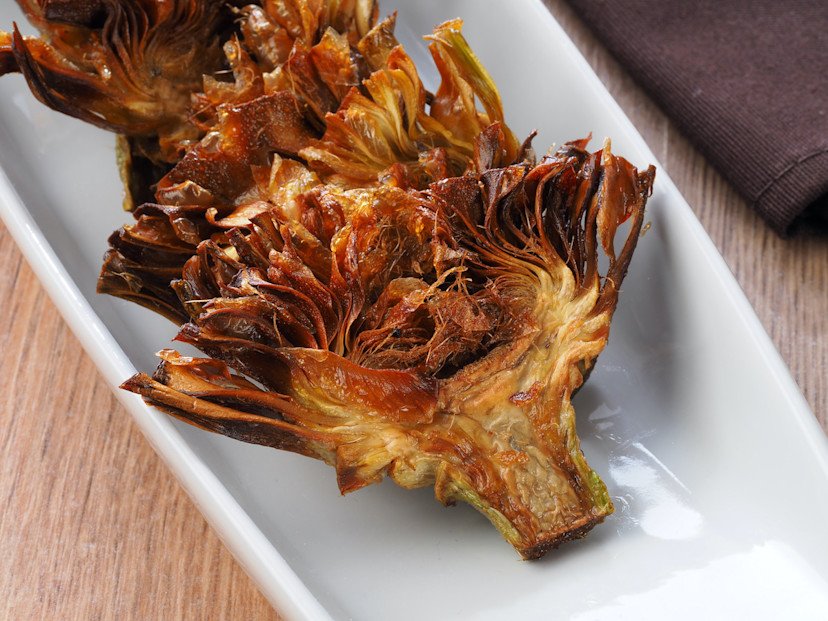
carciofi alla giudia
Day two can explore Testaccio’s authentic food culture with market visits, traditional trattoria lunch, and cooking class experience. This neighborhood provides deeper understanding of working-class Roman cuisine away from tourist concentrations.
Day three allows for day trips to nearby food regions or focused exploration of specific culinary interests such as wine bars, gelaterias, or specialty food shops. This flexibility accommodates individual preferences while building on previous experiences.
Advance planning for popular experiences such as cooking classes, wine tastings, and specialized food tours ensures availability while allowing spontaneous exploration of discovered favorites. Balance structure with flexibility for optimal experiences.
For comprehensive travel arrangements including accommodation, visitors can explore options through our dedicated Hotels booking platform, ensuring comfortable stays near Rome’s best culinary districts.
Longer visits allow deeper exploration of Rome’s food scene while developing relationships with local vendors, chefs, and food enthusiasts. Extended stays enable seasonal experiences and repeated visits to favorite establishments.
Weekly market routines provide authentic local experiences while offering practical benefits for extended stays. Many vendors recognize regular customers and provide special attention and recommendations.
Neighborhood specialization allows focused exploration of specific areas with detailed understanding of local food culture. Extended time enables discovery of locally favored places that require local knowledge and repeated visits.
Seasonal progression during extended stays showcases changing ingredient availability and menu modifications that reflect natural cycles. This temporal perspective provides deeper appreciation for traditional Roman cuisine.
Language learning opportunities enhance food experiences while providing practical skills for ordering, discussion, and cultural understanding. Many language schools offer specialized courses focusing on food vocabulary and restaurant situations.
Family vacation ideas in Rome benefit from food experiences designed to engage children while maintaining educational and cultural value. Many tour operators provide specialized family programs with appropriate pacing and content.
Interactive experiences such as pizza making classes and market scavenger hunts provide entertainment while teaching cultural appreciation. These activities create positive associations with travel and food exploration.
Accommodation selection affects family food experiences, with kitchen facilities enabling simple meal preparation while reducing dining costs. Many family-friendly hotels provide breakfast options that accommodate children’s preferences.
Restaurant selection requires consideration of children’s preferences while maintaining authentic experiences. Many traditional Roman restaurants welcome families and provide simple pasta dishes that appeal to younger palates.
Educational preparation before travel enhances children’s appreciation for Roman food culture. Simple lessons about Italian geography, food traditions, and basic vocabulary create engagement and enthusiasm.
Planning considerations include timing, pacing, and backup options for weather or energy levels. Flexibility remains essential for successful family food experiences while maintaining educational objectives.
For convenient travel arrangements that accommodate family needs, explore flight options through our Flights booking service, ensuring smooth journeys to begin your Roman culinary adventure.
Staying in Trastevere provides immediate access to Rome’s most romantic dining scene while maintaining walking distance to central attractions. This neighborhood offers numerous accommodation options from budget hostels to luxury boutique hotels.
Hotels near Campo de’ Fiori place guests in the heart of market activity and evening dining options. This central location provides easy access to multiple food neighborhoods while maintaining proximity to major tourist sites.
Testaccio accommodations offer authentic local experiences away from tourist concentrations while providing easy access to Rome’s most traditional food scene. This area typically offers better value than central locations while maintaining excellent transportation connections.
Jewish Quarter hotels provide access to unique culinary traditions and historic sites while maintaining central location benefits. This area offers intimate boutique accommodations with personalized service and local recommendations.
Vatican area accommodations serve visitors interested in exploring Prati neighborhood’s food scene while maintaining access to religious sites. This area offers numerous dining options that cater to international visitors while maintaining Italian authenticity.
Apartment rentals and extended-stay accommodations with kitchen facilities enable market shopping and simple meal preparation using local ingredients. These options provide budget savings while offering authentic experiences of daily Roman life.
Cooking equipment availability varies among accommodations, with some offering complete kitchens while others provide basic facilities. Checking equipment lists ensures compatibility with planned food activities.
Market proximity affects the practicality of accommodation-based meal preparation. Locations near major markets provide daily shopping opportunities while distant locations may require planned shopping trips.
Local shopping guidance from accommodation hosts enhances market experiences while providing practical information about vendors, pricing, and quality assessment. Many hosts provide detailed neighborhood guides including food recommendations.
Storage considerations affect market shopping strategies, particularly for fresh ingredients requiring refrigeration. Planning purchases around consumption schedules prevents waste while maximizing quality.
High-end accommodations often provide specialized food services including concierge assistance with restaurant reservations, private chef services, and customized food tour arrangements. These services enhance culinary experiences while providing convenience.
Hotel restaurants in luxury properties frequently showcase regional cuisine and provide convenient dining options with high quality standards. Many feature acclaimed chefs and extensive wine selections.
In-room amenities may include wine refrigeration, premium coffee systems, and welcome gifts featuring local food specialties. These touches enhance the overall culinary experience while providing convenience.
Concierge services at luxury hotels possess extensive knowledge about Rome’s food scene and can arrange exclusive experiences, special access, and last-minute reservations at popular establishments.
Location considerations for luxury accommodations often prioritize historic significance and central access while maintaining quiet environments for rest between food experiences.
Morning food tours provide optimal market experiences with fresh products and active vendor interactions, typically starting between 9-10 AM. Evening tours offer romantic atmospheres with illuminated historic sites and vibrant nightlife, usually beginning after 6 PM. Afternoon tours (3-6 PM) provide good weather conditions and moderate crowds while avoiding peak restaurant hours.
Budget food tours range from €35-65 per person for 3-4 hours with 6-8 tastings. Mid-range experiences cost €65-120 per person for enhanced access and smaller groups. Premium culinary adventures range from €120-250 per person for exclusive experiences. Daily food budgets typically range from €25-50 per person for authentic dining experiences.
Most professional food tour operators accommodate dietary restrictions with advance notice, including vegetarian, vegan, gluten-free, and allergies. Rome’s diverse food scene includes options for various dietary needs, though traditional Roman cuisine heavily features pasta, cheese, and meat. Specialized tours focusing on specific dietary requirements are available from several operators.
Comfortable walking shoes are essential as food tours involve significant walking on uneven Roman streets. Dress in layers to accommodate weather changes and indoor/outdoor transitions. Avoid overly formal clothing as many food experiences occur in casual local establishments. Bring a small bag for any purchases or take-home items from food stops.
Popular food tours require booking 1-2 weeks in advance during peak season (April-October), while winter months may allow shorter notice. Cooking classes and specialized experiences often require longer advance booking due to limited capacity. Weekend tours fill faster than weekday options, particularly during tourist seasons.
Many food tours welcome children, though age restrictions vary by operator and experience type. Family-friendly tours provide appropriate content and pacing for children while maintaining educational value. Some cooking classes offer specialized children’s programs with age-appropriate activities and instruction.
Standard food tours include all food tastings, beverage pairings, professional guide services, and educational materials. Transportation between stops is typically walking, though some tours include public transport or private vehicle costs. Gratuities for guides are optional but appreciated for exceptional service.
Most major food tour operators provide English-speaking guides, with many also offering tours in other languages including Spanish, French, and German. Private tours can often accommodate specific language requests with advance arrangement. Guide language abilities typically include detailed food vocabulary and cultural explanations.
Cooking classes typically begin with market visits for ingredient selection, followed by hands-on instruction in traditional techniques. Participants prepare complete meals under professional guidance, then enjoy their creations with wine pairings. Classes usually include recipe cards and tips for recreating dishes at home.
Multiple food experiences can enhance your culinary understanding while providing variety, though scheduling requires consideration of physical capacity and meal timing. Many visitors combine market tours, cooking classes, and restaurant experiences throughout their stay. Professional guidance helps plan complementary experiences without overwhelming your schedule.
Rome’s culinary landscape offers infinite possibilities for food enthusiasts seeking authentic experiences, whether you’re following budget-conscious strategies or indulging in premium gastronomic adventures. From the bustling markets of Campo de’ Fiori to the hidden trattorias of Testaccio, every neighborhood reveals charm and flavors that have been perfected over centuries.
The Eternal City welcomes food lovers with open arms and full plates, providing opportunities to find secret refuges where nonna’s recipes live on and where every meal tells a story of tradition, passion, and cultural heritage. Whether you choose guided food tours, hands-on cooking classes, or independent culinary explorations, Rome promises to transform your understanding of Italian cuisine while creating memories that will last a lifetime.
Ready to embark on your own Roman food adventure? Discover fascinating wonders that await in every corner of this magnificent city, where ancient history meets culinary innovation in the most delicious way possible.
Targeted Keywords Used in This Article:
This article is exclusively created for and protected by travelgoeasy.net. All content is original and proprietary. Unauthorized copying or reproduction is strictly prohibited.
Travel Go Easy – Your trusted partner for authentic travel experiences, offering comprehensive services from flight bookings to cultural explorations that create unforgettable memories in destinations worldwide.